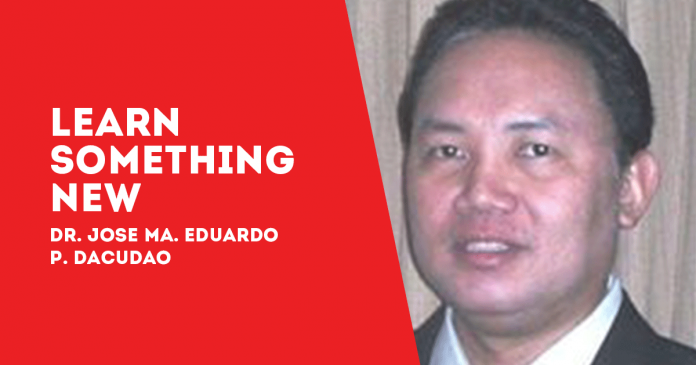
BY JOSE PALU-AY DACUDAO
WE TREK along the mind-body problem. And encounter a blackhole.
Into the blackhole we enter.
Do scientists know how we move our muscles?
Yes. No. Don’t know. Not sure. Hu-o. Indi. Ambot. Ambot.
We direct our brain to wriggle our toe. Lo! The toe wriggles.
Feel the top of your head. On the latitudinal boundary between the frontal bone and the parietal bone is a suture which you can feel as an indentation, especially in babies. This is the coronal suture. Located around three to four centimeters behind and underneath the coronal suture is a parallel upraised ridge-like fold of brain tissue, called the precentral gyrus. It is the most posterior part of the frontal lobe of the brain, located anterior and adjacent to the deep central sulcus of Rolando, which is what divides the cerebral hemispheres into frontal and parietal lobes. Like other gyri, it is caused by the brain’s progressive folding in embryological development, as the brain tries to fit in a space-limited skull. This implies that the more folded-up the brain, the more intelligent a species is; and dolphins (surprise!) followed by humans win the top prizes for the most convoluted gyri on Earth. In this precentral gyrus is where the upper motor neurons (UMN) reside and since they control muscle movement, this gyrus is also called the motor cortex.
(Note for pundits. When doing Neurosurgery, I always avoid even touching this area as much as possible, as damage to it can cause motor weakness.)
The neuronal cell bodies of the motor cortex undergo depolarization. Specifically, a change in the permeability of the cell membrane allows positive sodium ions to enter and temporarily change the total charge within the cell from negative to positive. The temporary change is called an action potential. This in turn sets off similar temporary changes in permeability in succession along the adjacent membrane, thus propagating the action potential as an electrochemical nerve impulse. This electrochemical signal travels down the UMN’s axon located in the brain’s pyramidal tract. The tract decussates to the contralateral side at the level of the cervico-medullary junction (the boundary between neck and head) and so the impulse it carries also crosses over to the opposite side. The signal travels down the lateral corticospinal tract in the spinal cord to the lower motor neuron (LMN) located in the side of the cord at the lumbar level. The LMN is induced to fire another impulse. This signal travels via the LMN’s axon toward the muscle. At the tip of the axon, the action potential causes the release of neurotransmitters from the presynaptic membrane (of the axon). The neurotransmitters cross the synaptic cleft and makes contact with the postsynaptic membrane (of the muscle). The muscle’s membrane depolarizes and so propagates an action potential in turn. The muscle contracts.
Note that the brain’s motor cortex directs the contralateral muscles in our body because the UMN nerve impulse crosses to the other side at the cervico-medullary junction. That’s why if we have a stroke on the right side of the brain, we get paresis on the left side of the body. And if we have a stroke on the left side of the brain, we get paresis on the right side of the body.
We direct our upper motor neuron to wriggle our toe. Lo! The (opposite) toe wriggles.
(Caveat. The above discourse is a short oversimplification.) (To be continued)/PN







